|
Maat-ka-Ra Hatshepsut |
last update:
03.01.2012
|
| |
Karnak - 8th Pylon |
|
| |
North Face |
|
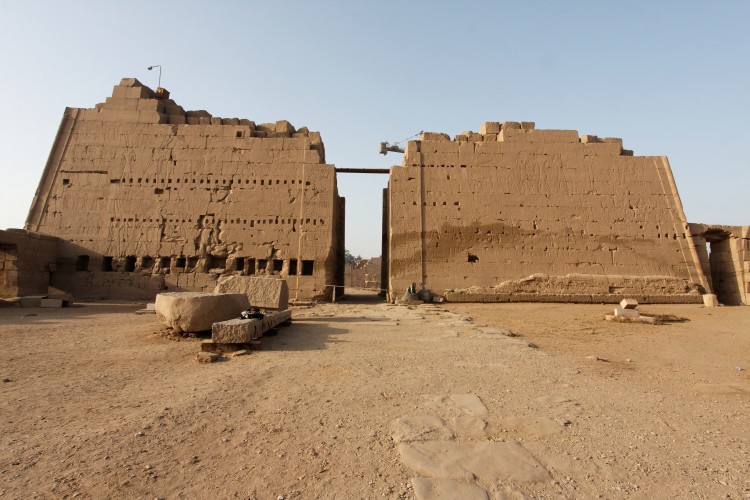
| South view of the 8th Pylon. The pylon is the first building
in ancient Egypt, which was completely made of sandstone. |
| In front of the west wing of the northern side of the pylon,
next to the central passage, the
remains of a statue made of schist (see the following photo) are mounted on a
sandstone basis which is connected with the pylon. Loeben (2001) assumed that
the statue hade been ordered by Hatshepsut who erected the pylon but most likely
was not completed during her reign. Probably, the statue had been "finished"
under one of the following rulers, however, due to the damages it cannot be
determined which king the statue should represent. |
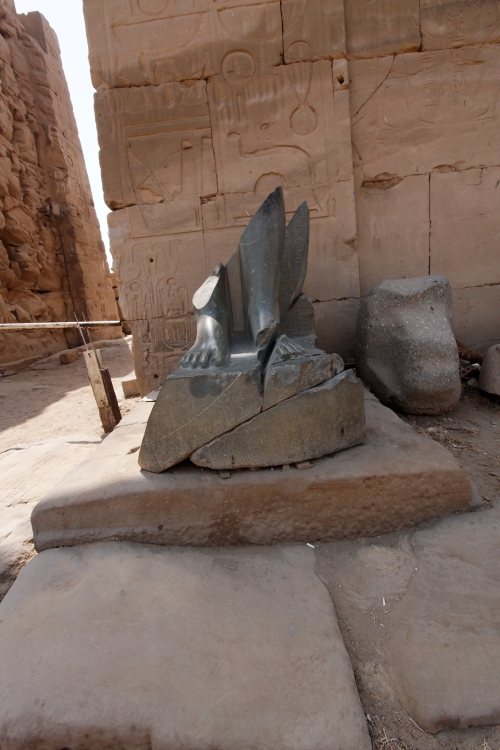
Furthermore, in front of the west wing the remains of an
enclosure wall (photo below) made of limestone are noticeable which still carries traces of an inscription (see photo below). The
wall had been built on a basis of
mud-bricks and reaches up to the height of the first register. According to Barguet (Le Temple d'Amon-Re à Karnak, 1962; p. 258 ff.) this wall enclosed the
whole pylon. Before the east
wing of the north face no appropriate remainders are to be discovered, according
to Barguet some
remains exist in front of the south face.
According to personal communications with the CFEETK (2010) a full enclosure of
the 8. Pylon by that can not be proved. |
| The upper part is rounded like a
parapet wall. This enclosure wall lining the pylon is unique and
its function is not known. Furthermore, the inscription on the wall is badly
destroyed and no longer readable, so that it does not provide some information. |
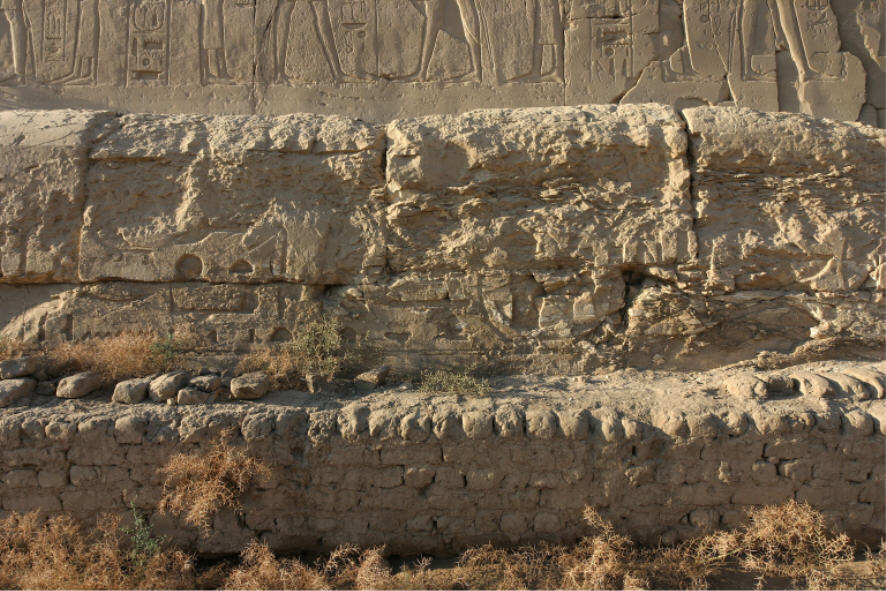
| The texts of Hatshepsut inscribed on the 8th Pylon have been
largely erased, altered, or re-inscribed. |
| East wing of the northern side |
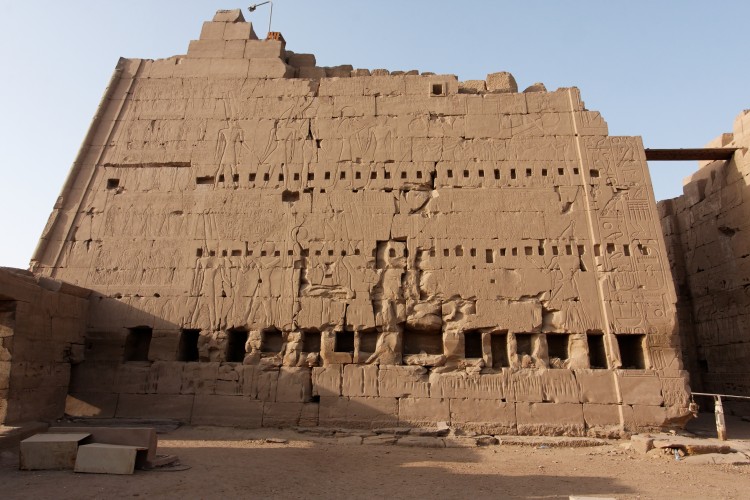
| On the eastern wing, directly besides the passage, the scene in the 1st (upper) register depicts the goddess Weret-Hekau leading
Thutmosis II to the left where Hathor is waiting and making njnj. The king is followed by a barque of
Amun carried by priests (see following photo). |
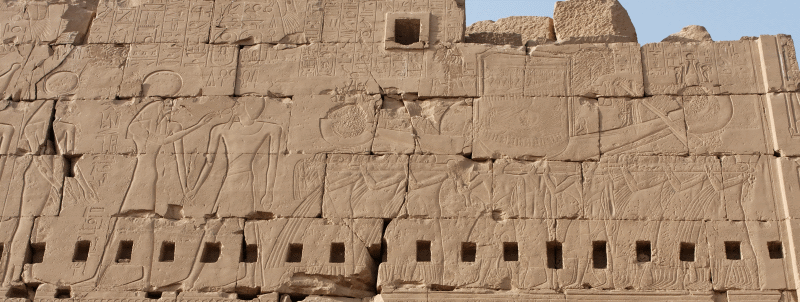
| In the 2nd (lower) register Thutmosis I is depicted standing
before the Theban triad of Amun, Mut,
and Khonsu. In his speech Thutmosis I is expressing his thanks to the
inthroned Amun for placing his daughter Hatshepsut (later changed to Thutmosis
II) on the throne (see also Porter&Moss II, p. 174, scene No. 517; text see: Urk
IV, 271 and subsequent passages). |
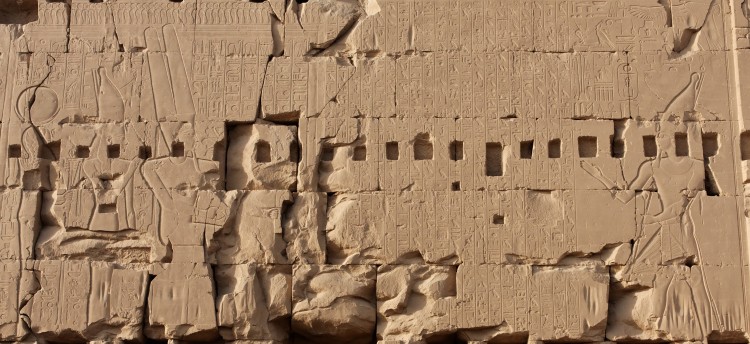
|
This scene shows of course the typical piece of "propaganda" of Hatshepsut. |
|
Further east the first (upper) registers shows Sethi I before Amun and die
smaller Ennead, below the scene the 2nd registers depicts Sethi I (with a
renewal-text) offering wine
to Amun and the greater Ennead. |
| West wing of the northern side |
|
The west wing has been decorating in three registers. |
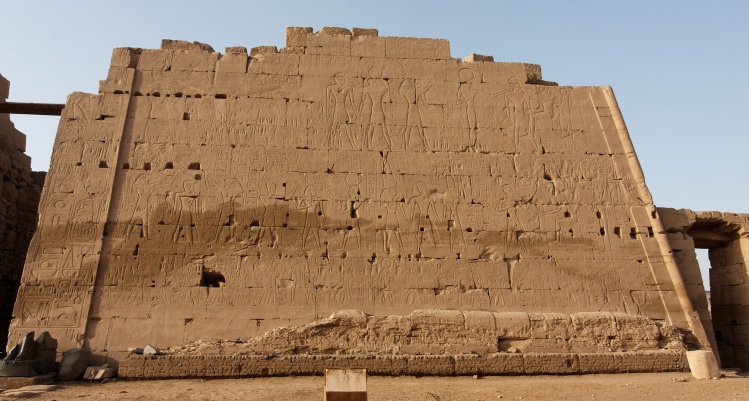
|
The upper register shows in first of two scenes, from left to right the barque of Amun
carried by priests, and the king led by Monthu. |

| Finally, the king is presented by
Weret-hekau to the enthroned Amun and Khons who stands behind Amun. Behind
the goddess Weret-hekau Thot is shown writing on heb-sed wands. In between there
are renewal-texts from Sethi I. |
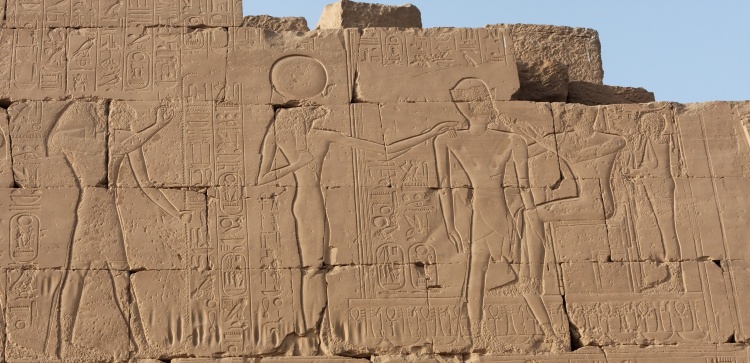
|
In all scenes the cartouches name Thutmosis II as the king depicted.
However, as on the east wing, the cartouches most likely had originally shown the
name of Hatshepsut and had been altered during her persecution. |
|
Furthermore, Murnane (Murnane, W.J., Tutankhamun on the Eighth Pylon at Karnak, VA 1, 1985)
showed that the two damaged barks of Amon depicted on the north face of the
Eighth Pylon were restored after the Amarna
Period by Tutankhamun before they were usurped by Horemheb and Sethi I
respectively. |
|
The second (four scenes) and the third (eight scenes) register were decorated in the name of Ramesses
III. |
|
The decoration of the 1st register on both wings of the north face raises some
questions: |
|
- which procession of the barque of Amun coming from the south is lead by the
king through the 8th pylon back into the temple? |
|
- the procession is welcomed on the south wing by Amun and on the east wing by
Hathor, so do the scenes show one or two procession(s)? |
|
- during the times of Hatshepsut the barque of Amun was brought back from the Opet-Feast
(performed at Luxor-Temple) as well as from the "Beautiful feast of the
valley" (celebrated at her temple at Deir el-Bahari) by boat (as shown in
the scenes of the Red Chapel and at the festival court at Deir el-Bahari), so if
the scenes depict the return from one of these feast do we have to suppose a
"harbor" southwest of the temple of Karnak? |
|








